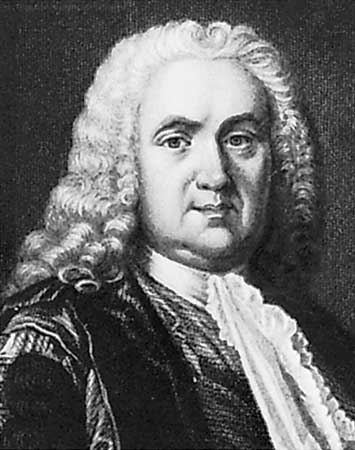Nationality English Name Richard Mead | Fields medicine Role Physician Doctoral advisor Johann Georg Graevius | |
 | ||
Books A Discourse on the Plague, The Medical Works of Richard Mead, M.D. | ||
90 Seconds Statement by Dr Richard Mead
Richard Mead (11 August 1673 – 16 February 1754) was an English physician. His work, A Short Discourse concerning Pestilential Contagion, and the Method to be used to prevent it (1720), was of historic importance in the understanding of transmissible diseases.
Contents
- 90 Seconds Statement by Dr Richard Mead
- Epic music Brooding dark Richard Mead
- Life
- Religious views
- Possible foibles
- Works
- References
Epic music - Brooding dark | Richard Mead
Life
The eleventh child of Matthew Mead (1630–1699), Independent divine, Richard was born at Stepney, London. He studied at Utrecht for three years under JG Graevius. having decided to follow the medical profession, he then went to Leiden and attended the lectures of Paul Hermann and Archibald Pitcairne. In 1695 he graduated in philosophy and physic at Padua, and in 1696 he returned to London, entering at once on a successful practice.
His Mechanical Account of Poisons appeared in 1702, and, in 1703, he was admitted to the Royal Society, to whose Transactions he contributed in that year a paper on the parasitic nature of scabies. In the same year, he was elected physician to St. Thomas' Hospital, and appointed to read anatomical lectures at the Surgeon's Hall. On the death of John Radcliffe in 1714, Mead became the recognised head of his profession; he attended Queen Anne on her deathbed, and in 1727 was appointed physician to George II, having previously served him in that capacity when he was prince of Wales.
While in the service of the king, Mead got involved in the creation of a new charity, the Foundling Hospital, both as a founding governor and as an advisor on all things medical. The Foundling Hospital was a home for abandoned children rather than a medical hospital, but it is said that through Dr. Mead's involvement, the Foundling was equipped with both a sick room and a pharmacy. He is even supposed to have influenced the architect, Theodore Jacobsen, into incorporating a large courtyard to promote the children exercising. A full size portrait of Dr. Mead, donated by the artist Allan Ramsay in 1747, ensures that his contribution will not be forgotten. The painting currently hangs at the Foundling Museum.
Dr Richard Mead was also a Fellow of the Royal Society and a Freemason (although it is not known to which lodge he belonged).
Mead was a collector of paintings, rare books, classical sculpture, gems and zoological specimens, which he made available for study at the library in his Bloomsbury house. His collection consisted of more than 100.000 volumes. After his death, it took 56 days to auction them to book collectors from England and abroad.
Mead's country estate was at Old Windsor in Berkshire, but he died at his house in Bloomsbury in 1754. His London home later formed the basis of Great Ormond Street Hospital.
Mead was buried in Temple Church. A monument to him was placed in the north aisle of Westminster Abbey, with a bust by Peter Scheemakers.
Religious views
In 1755 was published (posthumously) Mead's ‘Medica Sacra; Or, A commentary on the most remarkable diseases, mentioned in the Holy Scriptures’. He made use of the work of his supposed relative Joseph Mede's Doctrine of Demons and also of his once patient Isaac Newton's Chronology to argue that pagan ideas regarding demons had entered Christianity. Like Arthur Ashley Sykes and others, Mead understood those afflicted by demons in the New Testament to refer simply to those suffering from a variety of illnesses:
‘That the Daemoniacs, daimonizomenoi, mentioned in the gospels, laboured under a disease really natural, though of an obstinate and difficult kind, appears to me very probable from the accounts given of them.’Possible foibles
Lawrence Sterne was criticised for referring to Mead as Dr Kunstrokius, defending himself on the grounds that all he did was "most distantly hint at a droll foible in his character...known before by every chamber-maid and footman within the bills of mortality".
Works
Besides the Mechanical Account of Poisons (2nd ed, 1708), Mead published:
